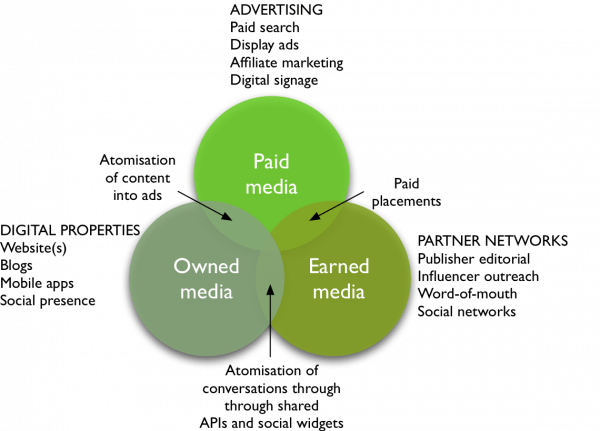Owned media, as Cara Tarbaj summarizes at Social Media Today, is content that you publish on channels that you control (such as your website). Earned media is when others publish content about you. Both have their benefits and drawbacks, and it is crucial to know when to use which channels.
When should you publish on your website, and when should focus more on guest posts and by-lined articles? It just depends on your overall marketing strategy and timeframe. Here’s a rough guide.
Publishing on Your Website
Here are the benefits of owned media:
1. You Own Your Website. By extension, you also own and control everything that is published on it. Rebecca Murtaugh has explained why companies should own their data and digital assets, but it comes down to more than just security issues. Imagine that you focus most of your marketing work on publishing on other websites – and then they disappear one day (as may happen to Facebook in the years ahead). All of your investment will be lost. Third-party companies will always do what is best for themselves – they care a lot less about you.
2. You Can Rank Directly in Search Results. If a piece of content on your site ranks highly in Google, then your website will rank highly in the search engine and receive the resulting traffic. For example, this blog post of mine ranks second (as of this moment) in non-personalized, U.S. search for “global SEO strategy.” If your content elsewhere ranks highly, then someone else’s website will be the one that gets found in Google. Your work, in many respects, will mainly benefit them.
3. You Can Build Your Brand Directly. The more quality, authoritative content that your site publishes, the more that your brand and website will grow over time as you – slowly but surely – gain traffic, mentions, backlinks, higher search-engine rankings, and customers.
The key to remember: Owned media – publishing on your own website – is the best method to fulfill your long-term marketing and business goals, especially in the context of increasing search-engine rankings. Websites need to publish content continually on the keywords, themes, and topics for which they want to rank.
Publishing on Someone Else’s Website
Here are the benefits of earned media:
1. You Can Leverage Another’s Site Audience. If you sell widgets and can be mentioned on a website that is visited by 100,000 people who like widgets, then the exposure will increase sales as people click on a link to go to your website or search Google for your brand name after seeing the mention.
2. You Can “Earn” Quality Backlinks. Links from quality, authoritative outlets are “votes” for your website in Google’s eyes. Articles and more on relevant, third-party websites that mention yours will help to increase your overall Google rankings. However, there is a right and wrong way to do this. Don’t do what has been called “guest post marketing” – publishing generic articles on countless, random websites just for backlinks. As I wrote at Moz, Google hates this – it is best to use traditional PR strategy in this context.
3. You Can Build Your Brand Externally. If those 100,000 people who like widgets see you or your company mentioned on a website about widgets, then that mention will raise your status as an expert on the industry and a trusted seller of widgets.
The key to remember: Earned media – getting content and mentions on other websites – is the best method to fulfill your short-term marketing and business goals.
How to Decide?
Whether you have produced a blog post, e-book, video, or some other type of content, here are some common questions to ask while you decide what content to publish in what locations:
- Is this content something you’d never want to lose? Publish it on your website.
- Is it an attempt to rank highly in search results for a certain keyword theme over time? Website.
- Is it part of your sales funnel (such as an e-book to download in exchange for contact information)? Website.
- Is it meant to introduce and/or brand yourself to a targeted audience? Publish it in another strategic outlet.
- Is its goal to generate more immediate sales and social-media followers (or anything else)? Somewhere else.
- Is it aiming to “earn” more backlinks (rather than “build” them)? Somewhere else.
- Wherever you publish content, be sure to apply Google+ authorship whenever possible.
Here’s one example. I contribute to Moz and participate in the community. It’s pursuing two different tactics (among others) as part of an overall content strategy. As we have summarized, it’s all a part of the strategic communications process of delivering the right message in the right content via the right channel to the right audience.
It’s not enough to create content. It’s also important to know how to use it.
